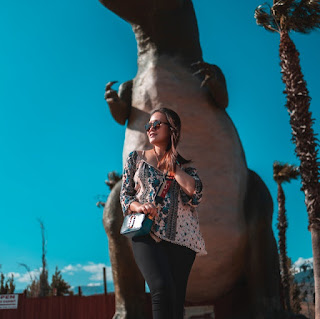- Get link
- X
- Other Apps
- Get link
- X
- Other Apps
We all know by now that most dinosaurs were probably feathered, right?
 |
Everything we know about Dinosaur Evolution has changed here. |
When did feathers evolve?
The conclusions could upend everything we thought we knew, not only about the evolution of feathers...but about the whole dinosaur evolutionary timeline, too. The long-held belief has been that feathers evolved around the same time as birds, giving them an advantage in a dinosaur-driven world and that dinosaurs developed feathers around the same time that birds were branching off. But recent discoveries indicate that we may need to start thinking about this totally differently. In early 2010, a fossil discovered in Russia showed remarkably well-preserved skin covered in both scales and feather-like structures. And recently, pterosaur fossils have been found to display feathery structures too. And pterosaurs are the flying reptilian cousins of dinosaurs. And both of these organisms are quite a way back from birds on the evolutionary tree. Like, we think birds probably gradually evolved in the Jurassic period, about 165-150 million years ago. But these discoveries potentially push back the origin of feathers to 175 million years ago, tens of millions of years before Archaeology, which is widely regarded as the first ‘bird’!It’s worth noting here that the ‘pterosaurs had feathers’ idea is a little controversial—some paleontologists take issue with calling these structures feathers at all. But many experts look at these structures, whatever they may be called, as expressions of feather-producing genes. And that’s the important part. See, this fossil evidence pieced together over several years, confirms genetic work. The development of feathers in an organism is controlled by the same genetic regulatory pathways that give rise to different surface structures in other animals, like dentifrices in sharkskin, scales in bony fish, hair in mammals—and even teeth!. Molecular genetics analysis has revealed evidence of these genomic regulations way back in the evolutionary tree, in the Archbishopric group. Archbishopric was the “ruling reptiles” of the late Permian period, and this means that the genetic basis for feathers may have existed long before the dinosaurs and well before birds, which are the Aves group. All of this put together makes for pretty compelling evidence that feathers are much more ancient than we thought.
 |
Everything we know about Dinosaur Evolution has changed here. |
Why did feathers evolve way back before birds started using them for flight?
There’s a couple of possibilities, but one idea is that at the end of the Permian period, when those reptile dinosaur ancestors ruled the land, there was a huge extinction event. The end-Permian mass extinction, to be exact. And as organisms slowly started to recover and repopulate the land, they were different. They walked upright on two legs, instead of lumbering about on four. They had faster metabolisms and some may have even been endow-thermionic, or warm-blooded. So to compete with our ancient mammalian ancestors (who were probably already evolving hair to stay warm and hardy) dinosaurs, pterosaurs, and more started using those feather-building genes to express feather-like structures, most likely for pure insulation. Overall, this changes most of our ideas about how birds may have evolved, and what role feathers played in their divergence from dinosaurs. This amalgamated work leaves us with a bunch of other questions, too!
 |
Everything we know about Dinosaur Evolution has changed here. |
What were the other purposes of feathers in birds as birds diverged from the tree?
These radically shifting evolutionary timelines don’t just change our popular conceptions of what dinosaurs may have looked like. Heck, the movies have bigger things to worry about. But, emerging techniques and the melding of fossil and genetic research keep bringing us closer to a more complete picture of the evolution of life on Earth, and how the organisms we recognize today came to be and are related to each other. If you have another fossil mystery you like to see us uncover, let us know down in the comments, and as always—thanks for reading.
BRIGHT SITE OF LIFE ONE
- Get link
- X
- Other Apps
Comments
Post a Comment
Please do not enter any spam link in the comment